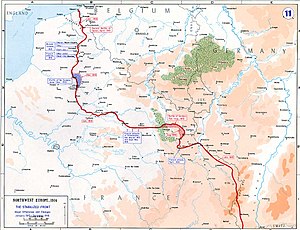The Second Battle of Champagne was a French offensive against the invading German army beginning on 25 September 1915, part of World War I.
Battle[]
On 25 September the offensive was successful and the Germans lost ground. Artillery fired a heavy bombardment for 3 days and then the advance began. 2 miles (3 km) were gained. The next day, reinforcements arrived for the Germans and the offensive lost momentum until it finally ended on October 6. Due to intervention, the offensive was restarted but never really got on track again. The Germans counterattacked on October 30 and managed to reclaim all the territory lost to the French. The Plan was finally abandoned on November 6.
Aftermath[]
Analysis[]

The battle had led to Verdun being stripped of its artillery, drawing the attention of the German commanders. French success was due largely to the weakness of German defense in the Champagne region. The offensive had given the local German commanders a severe fright as their defences were overwhelmed but prompt reinforcement contained the French advance and it was noticed that the improvised positions of fresh artillery and machine guns had a greater effect on French attacks than the original ones, a finding that was incorporated into German defensive thinking as was the ability of relatively small bodies of troops to hold ground when supported by enough artillery and machine guns. The course of the battle added to Falkenhayn's pessimism about the feasibility of a breakthrough on the western front. The strategy pursued at Verdun was a consequence.
Casualties[]
The offensive had been disappointing for the French. Despite their new 'attack in echelon' they had only made quick progress during the time it took for the Germans to strip reserves from elsewhere and rush them up. They had lost 145,000 Men, while the Germans lost 72,500 men, although Foley gave 97,000 casualties based on the German Official History.[1] The French had taken 25,000 prisoners and captured 150 guns.
Footnotes[]
- ↑ Foley 2005, p. 97.
References[]
- Foley, R. T. (2005). German Strategy and the Path to Verdun : Erich von Falkenhayn and the Development of Attrition, 1870–1916. Cambridge: CUP. ISBN 978-0-521-04436-3.
External links[]
The original article can be found at Second Battle of Champagne and the edit history here.
